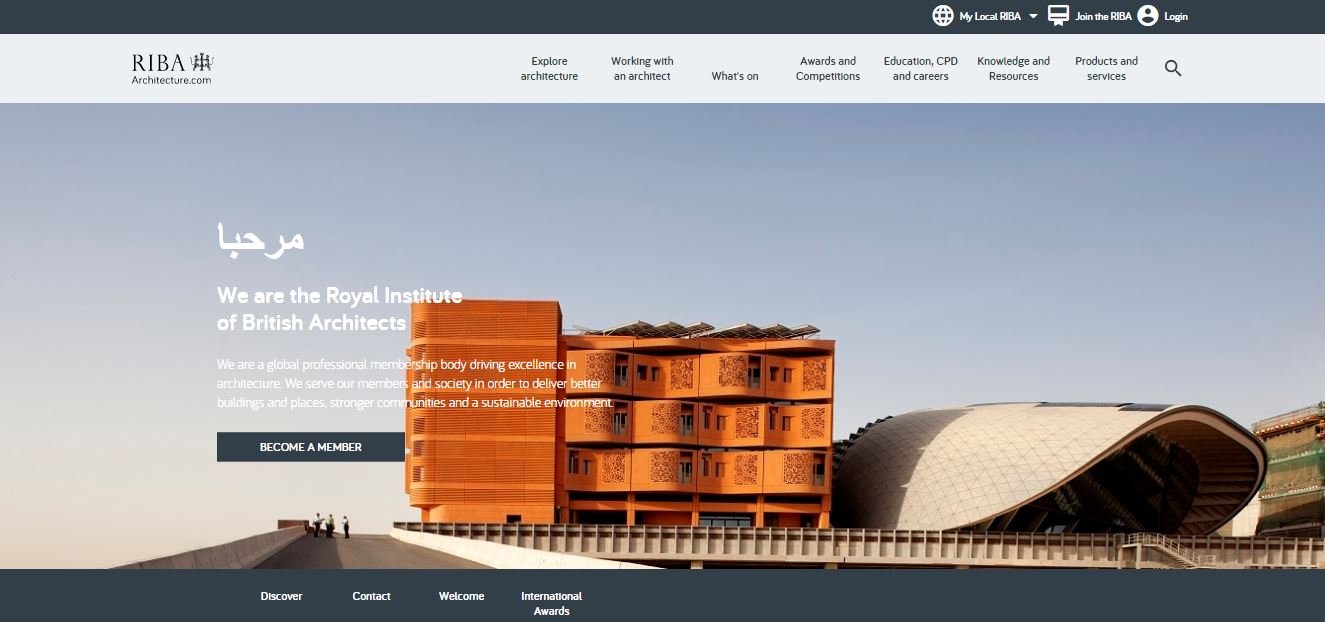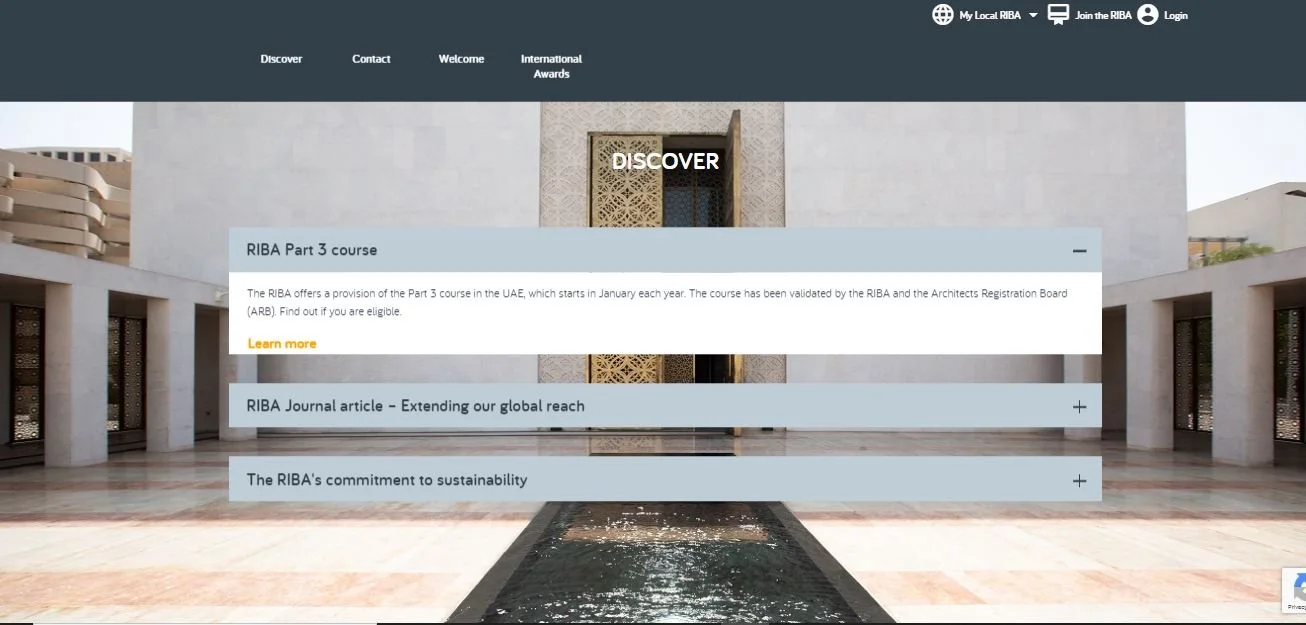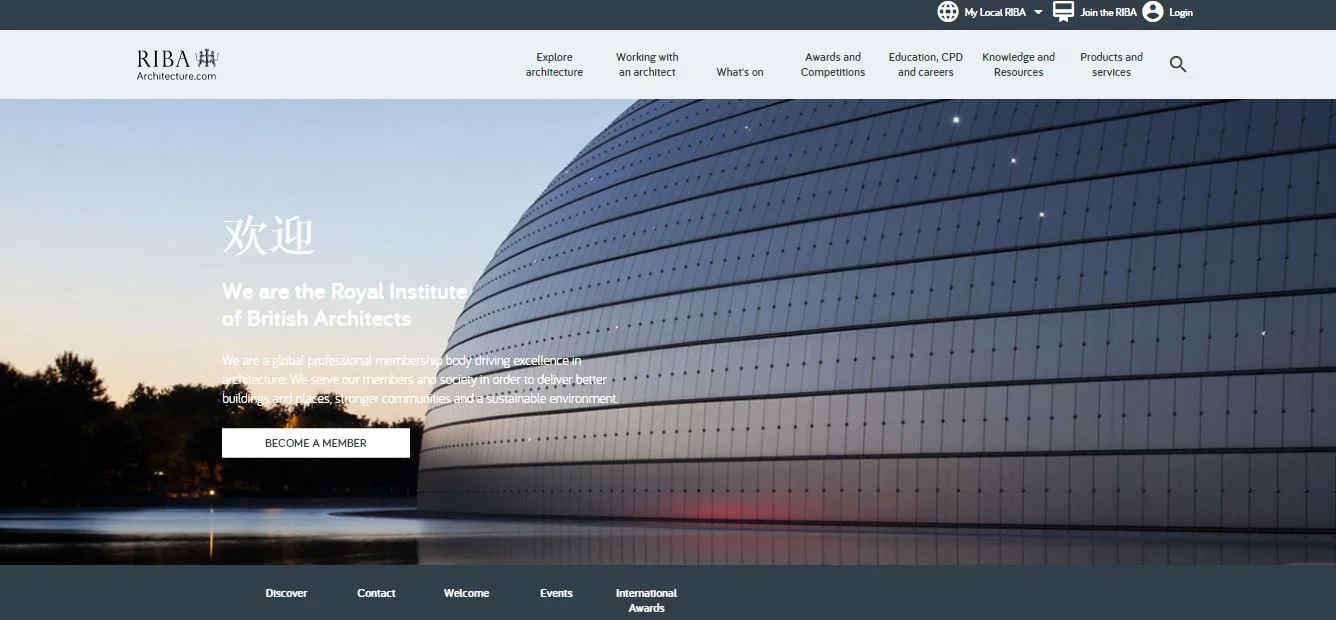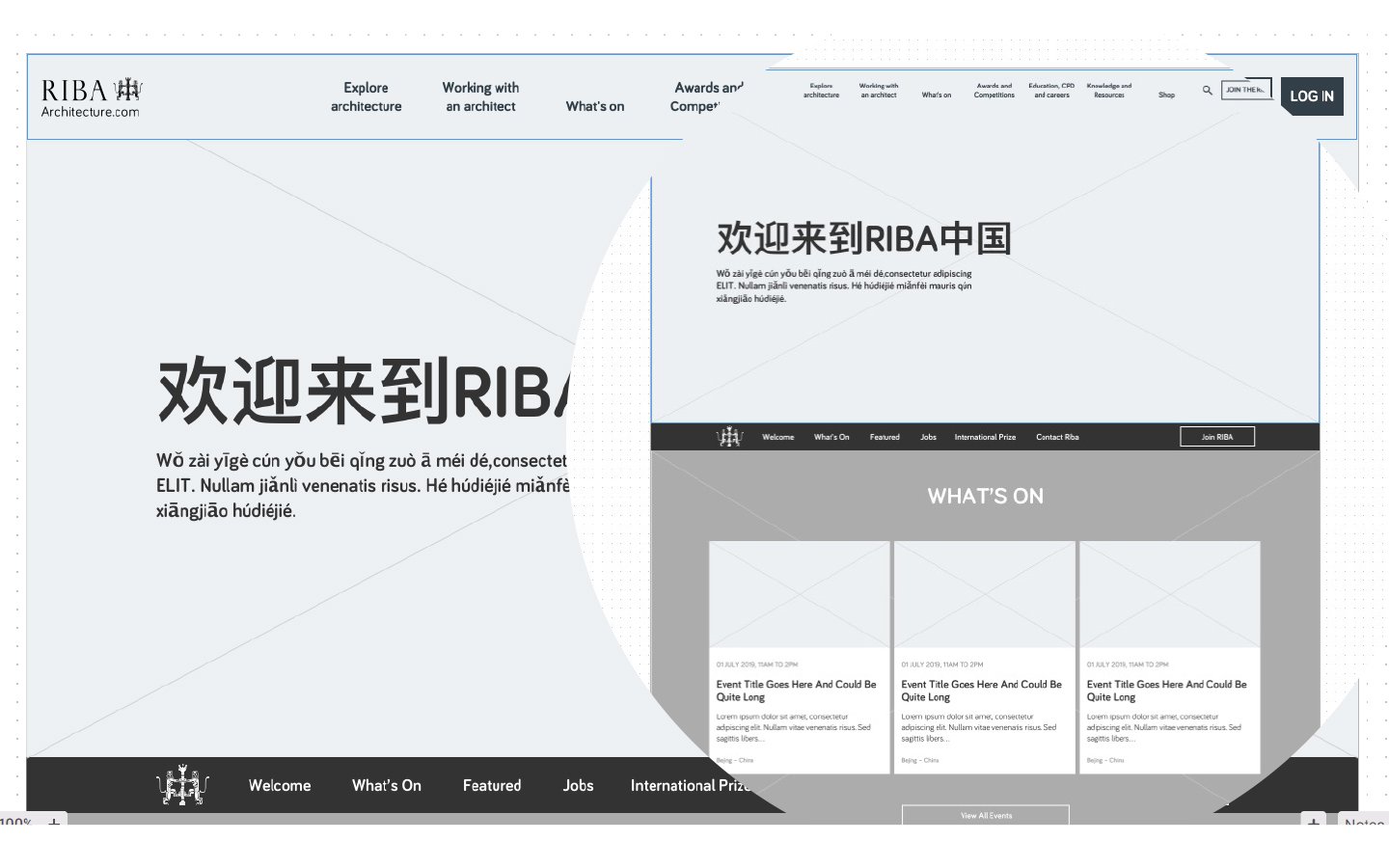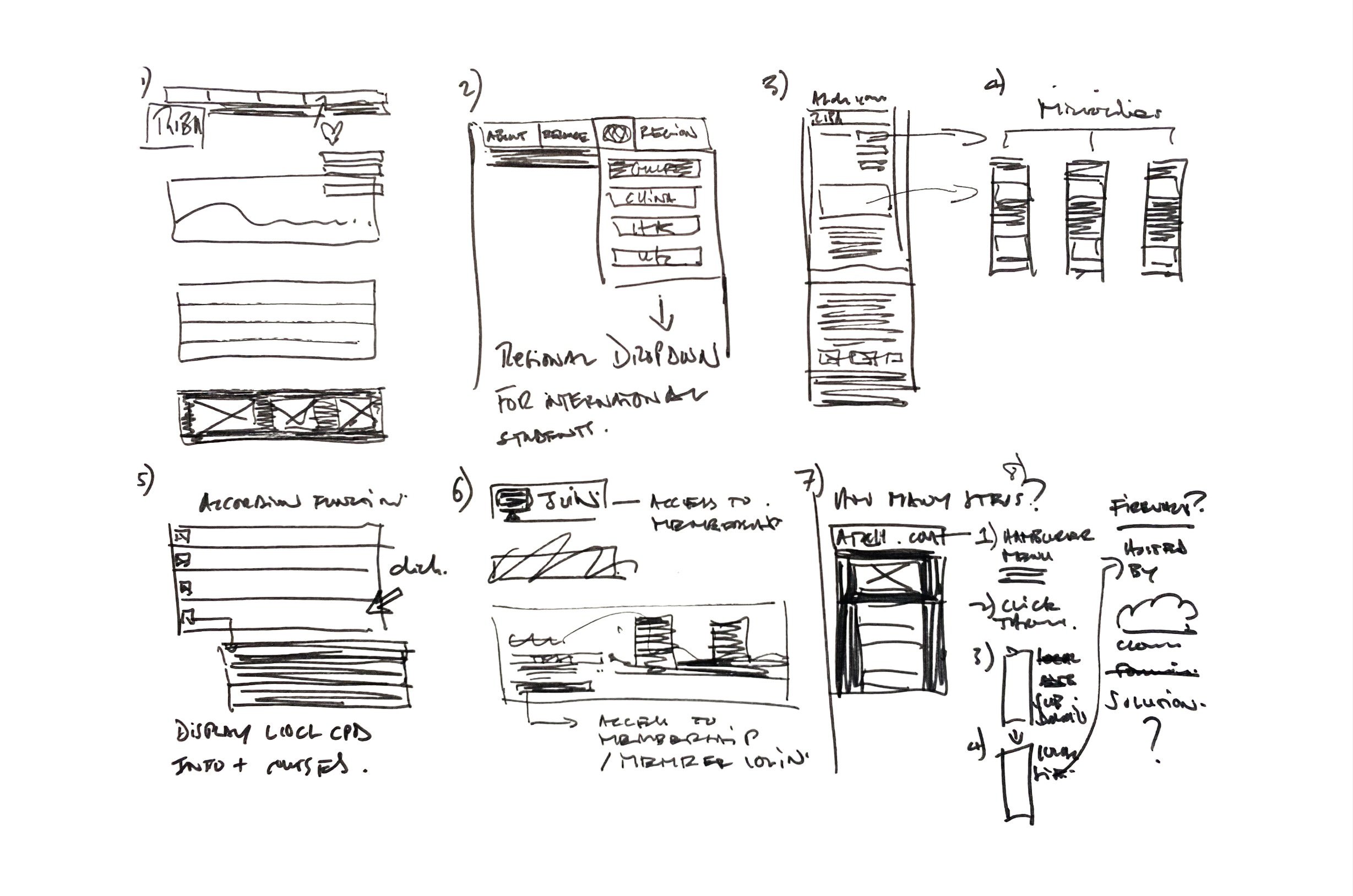RIBA project detail
RIBA Microsites: It all started when…
-
UX/UI and Front End Design: In house team & Wattle software production agency
User research: Custom Google forms survey and interviews with international user groups
Content/ Film production: Mustard Collective
Architectural practices: Bean Buro, Amy Lam Studios, Studio DS
Photographer: Gerry O’Leary Photography
CMS used: Sitecore
Developer team: In house
My Role
Overseeing the entire project management process from start to finish, which involved coordinating brainstorming sessions, performing user research, supervising design revisions and development phases. Additionally, responsible for the launch, post-launch evaluations, and offering future recommendations for managing the microsites. A key aspect of the role involved content production, where I wore the hat of a production and art director to guide the creation of high-quality films and interviews, ultimately contributing to a fresh repository of content for the global microsites.
The Challenge
To build and implement three international microsites into the existing Royal Institute of British Architects, architecture.com website structure. This was an end-to-end project taking place over an three-month timeline.
The three microsites, initially serving mainland China, Hong Kong and Gulf geography regions were designed to represent broadly, the work of architectural practices and connect recently graduated architects to continued RIBA professional development resources in those regions.
They were also to be incorporated within the existing site structure and navigation of architecture.com. In addition, the microsite design, new widgets and components had to provide a more dynamic content management toolkit for the content team.
‘Future proofing’ the sites was a key early stage requirement, factoring in content personalisation, based on a user’s geographic location, in addition to translated, fully optimised and localised content. The latter part of this requirement was very specific to China geographic region which represented a series of nuanced barriers for hosting content. This ended up being beyond scope, for the MVP of the project.
User Research and Ideation
Custom Google forms survey and interviews with international user groups.
The user research methodologies, were both quantitative and qualitative in nature. In this instance, the approach consisted of establishing an international ‘user group’ of potential interviewees, made up largely of senior architects from established architectural practices, recent graduates and soon to be graduates, from across the three regions.
The ‘user group’ was established for both research approaches, although the direct interview pool was smaller than the overall group used also for the survey, and consisted of approximately eight senior architects. Interviews were all conducted by telephone or via video call and lasted approximately 30 minutes in duration. They were carried out across variable international timezones.
The survey itself was designed initially on Google Forms, in a typical survey/ questionnaire format. This was adapted into accessible language formats (and dialects) for regions. It was also adapted for use in mainland China, onto Weibo, China’s dominant multi-functional micro blogging social media network. The interview questions, to avoid biases, were road tested by architects based at selected practices and also by members of the project delivery team, before being distributed amongst the wider survey pool. Over two weeks, the eventual uptake and successful completion rate for the survey was high, at about 80% of the overall pool. This was largely down to the strength of relationship between RIBA, associated practices and universities.
The user research for the project provided an essential steer for the microsite component design, information architecture and also allowed the RIBA content team to focus delivering more bespoke content plans for the respective international audiences. One unplanned for benefit, was that it also served as a useful analysis of international student preferences for professional development for the RIBA marketing teams.
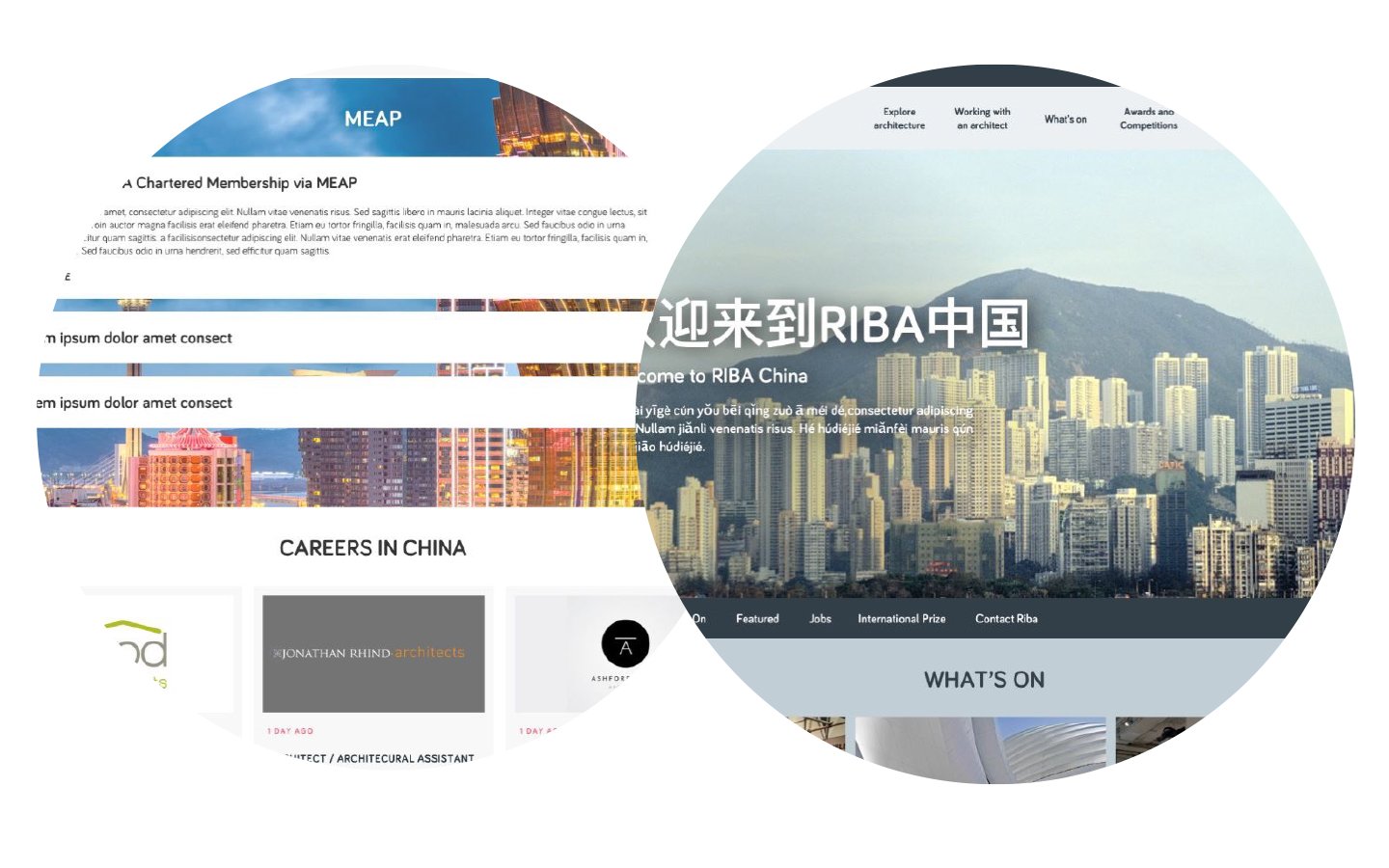
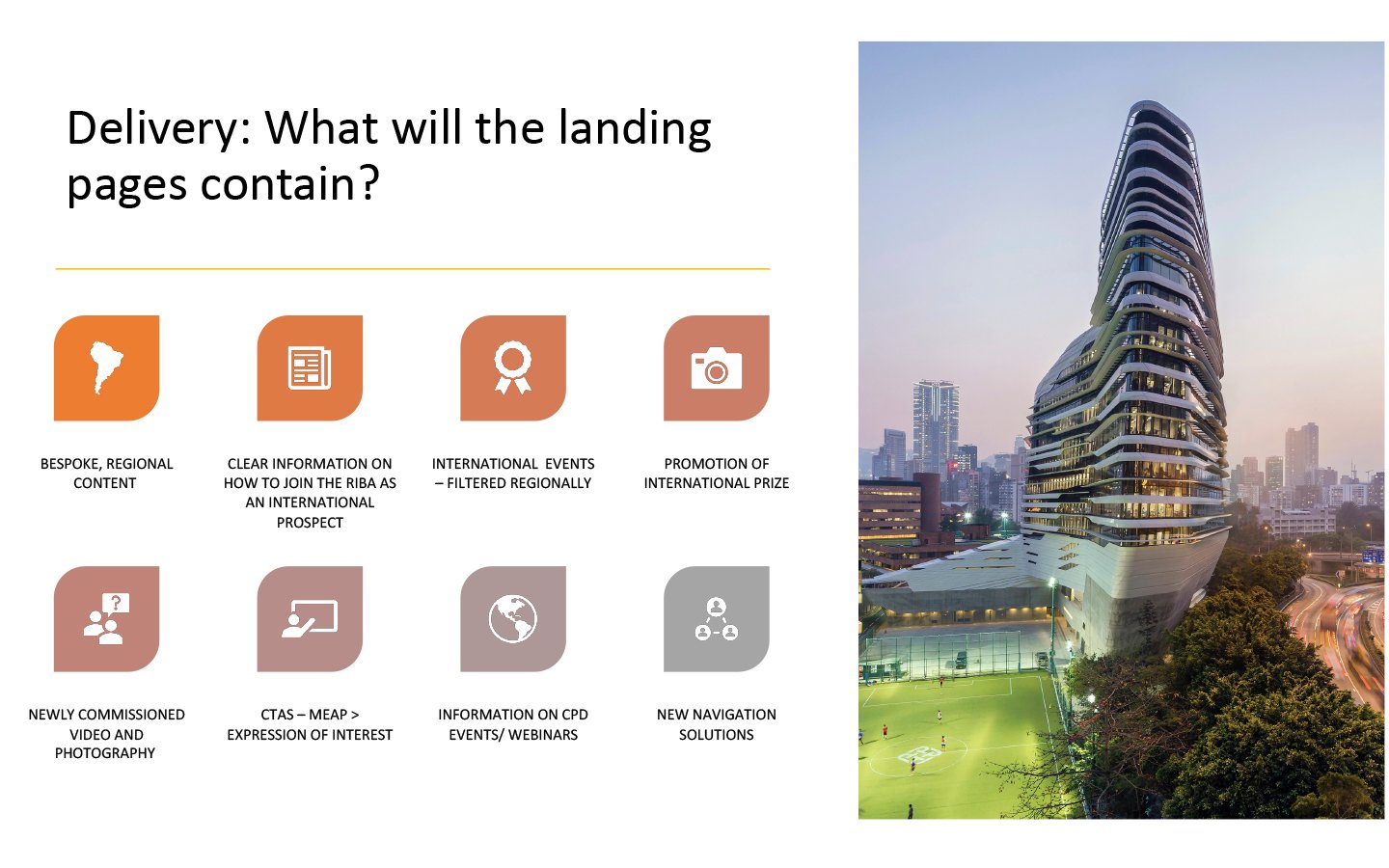
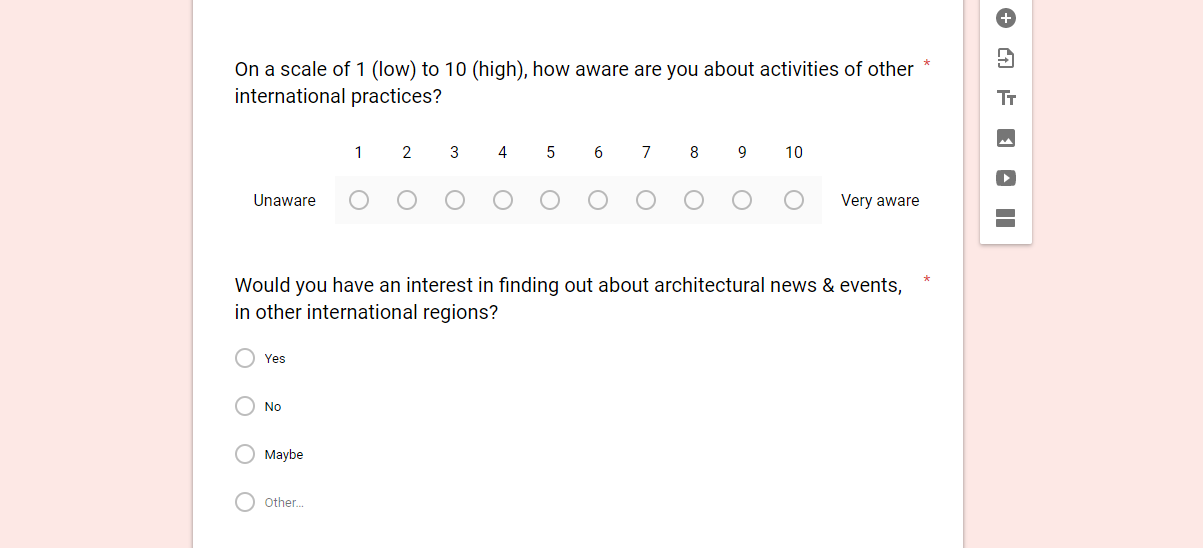
The Solution
It was essential to factor in how the Microsites would aesthetically and functionally fit within the RIBA information architecture – whilst maintaining discoverability. Although a ‘Nice to have’, it was also a requirement in the scope of work, that the realisation of the microsites would foster in an opportunity to expand existing Sitecore widget capability. This would off content editors and designers an expanded toolkit to build more innovative experiences in the CMS.
Another ‘bi-product’ of the design was an improved top tier navigation. This aimed to incorporate the international microsite destinations, whilst also acting as an updated login portal for RIBA members.
Wireframes, Low-Fi and Hi-Fi mock-ups
